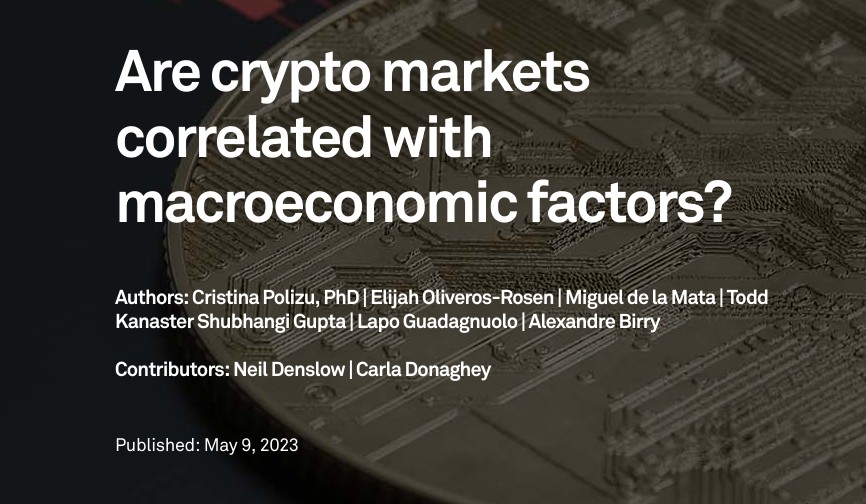Cryptocurrencies seem to be less correlated with macroeconomic factors than traditional financial assets. This is according to a report “Are crypto markets correlated with macroeconomic factors?” published May 9, 2023.

The report asks how correlated interest rates, inflation and other economic measures are with the price of crypto assets and crypto indices such as the S&P Cryptocurrency Broad Digital Market Index (S&P BDMI), in comparison with the correlation these factors have with more traditional investments. It also looks to weigh the importance of economic readings against crypto-specific drivers, such as market confidence, investor adoption or liquidity conditions.
“Cryptocurrencies may well play an increasing role in investors’ portfolios, and holders can’t just assume that crypto markets operate in their own little world,” said Cristina Polizu, managing director at S&P Global Ratings. “Instead, it is vital to consider how traditional economic factors relate with crypto assets in addition to market-specific risks.”
Key findings of the report include:
- Bull and bear runs in the crypto market have both coincided with periods of ultra-loose monetary policy and of significant tightening. While the recent rapid increase in interest rates could have a negative impact on crypto markets, idiosyncratic factors also seem to play a large role.
- Crypto assets could theoretically be a hedge against inflation. Still, the track record for crypto is likely too short to prove this. There has been comparatively strong adoption of cryptocurrencies in certain emerging markets suffering from high inflation and rapid depreciation of the local currency.
- The dollar has been generally inversely correlated with prices of crypto assets.
- Crypto markets appear to perform strongly during periods of low market volatility and less well during high volatility.
“Today’s fast-evolving markets make keeping up with the latest developments and research more important than ever,” said Elijah Oliveros-Rosen, lead economist at S&P Global Ratings and one of the co-authors. “This is particularly true for relatively new crypto assets because there is still much to learn about the sector and its long-term drivers.”